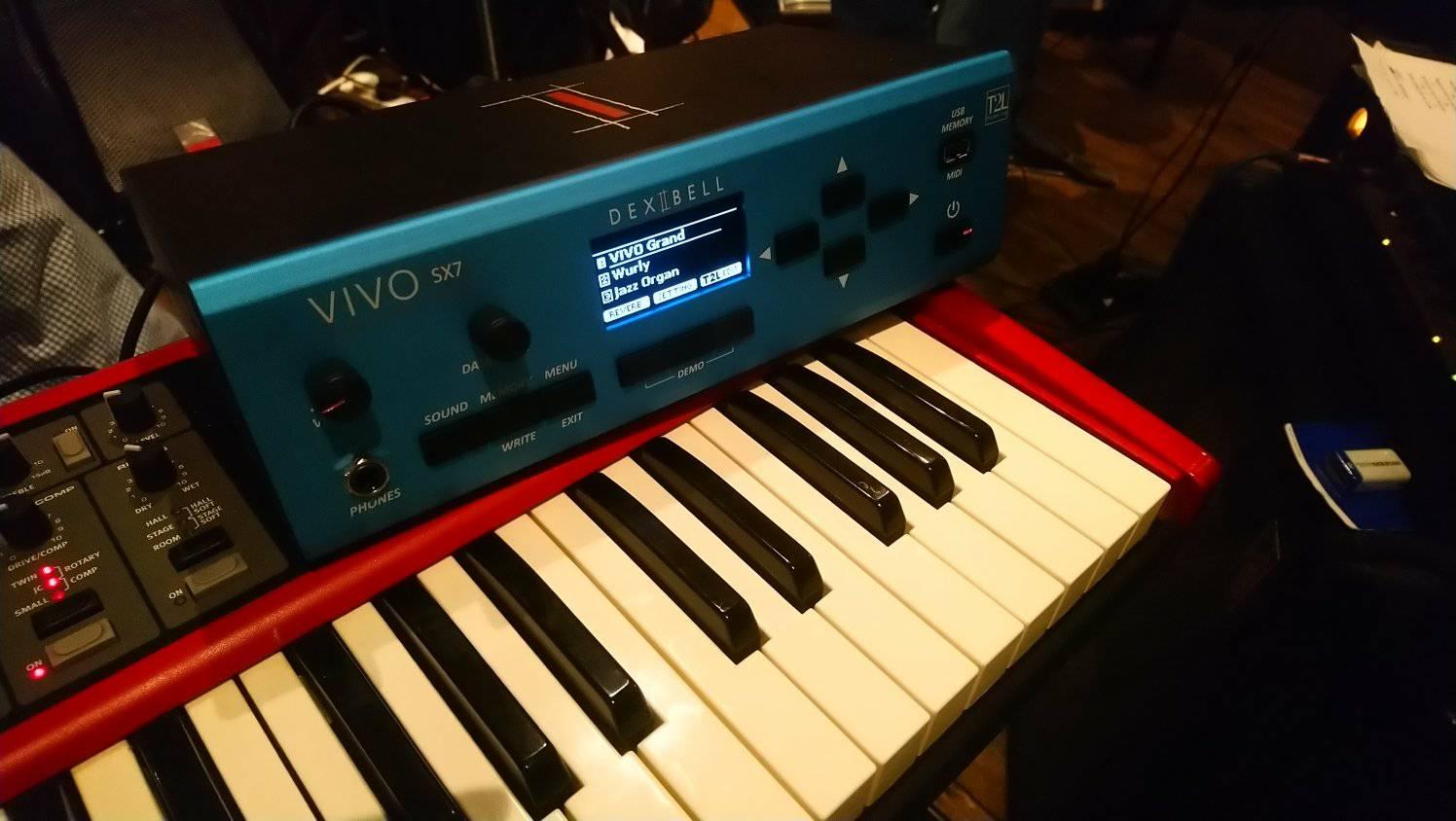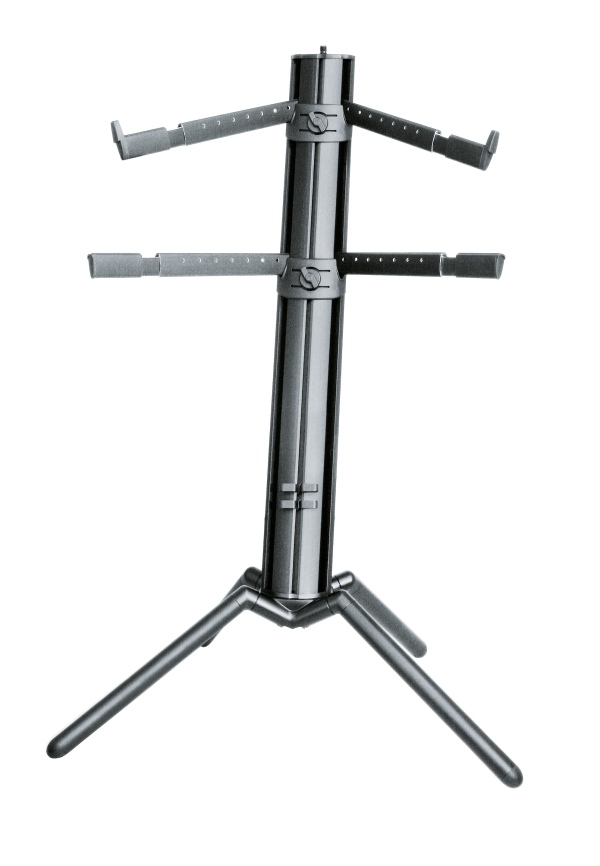In the latter part of 2019 I started attending informal open mic nights at a local pub, one a month ran by a friend, one a month by one of his friends.
The arrangements for 2020 haven’t been decided, but this is what I’ve used most commonly when attending these evenings. Not being a “lead performer”, along with the regularly attending bass player we get to set up first, but it has to be a “quick” setup.
First out comes a Konig & Meyer Spider Pro stand. Packed into a columnar bag it doesn’t take long to rotate the four legs into position (packed they run parallel to the main column), then all I do is loosen the clamp on the bottom support arms to drop them down enough to open them out, then raise them about as high as they’ll go with the top arms still “locked” into the column. The microphone style thread on top of the column stand receives an iPad holder. The one I have is for my Apple refurbished iPad mini which like the band setup runs BandHelper, but in this situation doesn’t get much use and only sometimes used as a cheat sheet for chords.
Next on the setup is my Nord Electro 3. This appears to have developed a “fault” where the headphone socket sometimes barely carries any signal. It seems certain preset numbers and/or certain “sample library” sounds are affected. In any case I only use this as a controller in this particular rig and take advantage of the bare surfaces to the left and the right on the control panel as homes for other equipment.
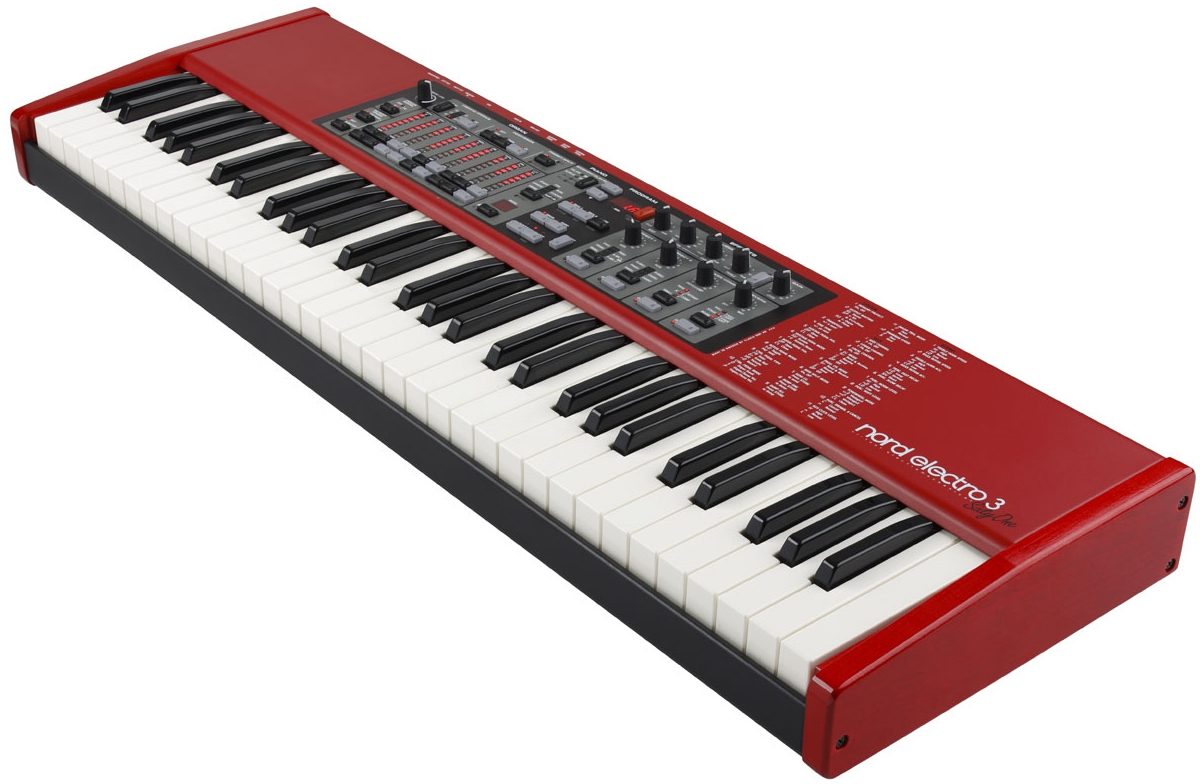
In order to more easily use this as a controller I take the MIDI output of the Nord into a Sipario MIDI router from Lab4Music.
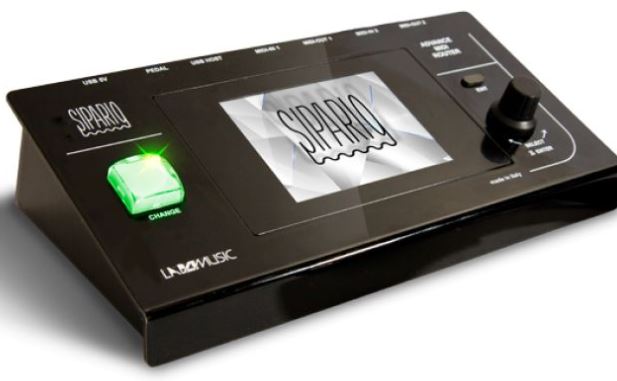
I have a few “scenes” configured to take the output of the Electro 3 and send it out on various MIDI channels or combination of channels, with or without transposing. This unit fits very nicely on the left hand side of the Nord Electro 3. The MIDI output goes to my newest piece of equipment, a Dexibell Vivo SX7.
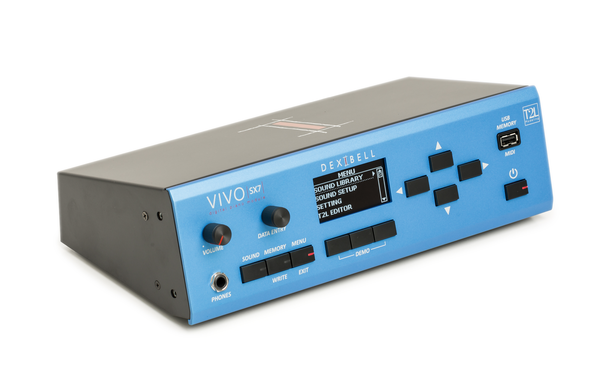
Until recently my favourite of all piano sounds came from my Roland FP-4F digital stage piano, which is a rather heavy (though relatively lightweight in its class) keyboard and takes up a substantial amount of space, involving changing the configuration of my car seating to transport. The Dexibell Vivo range has in my opinion the best piano sounds I’ve ever heard. My current favourite sound is the “platinum” USA piano weighing in at almost 800 MB of sample, meaning you have to “unload” several of the built-in (almost) 1.5 GB preset sample packages to use any of the platinum sounds.
This unit doesn’t just use amazingly long recordings of actual pianos but includes other “modelling” like features, not just well known characteristics like sympathetic resonance but other things like hammer noise, key off noise, damper noise and several other features that you can control yourself with the T2L (True2Life) feature.
My favourite feature of all though has to be the “unlimited” polyphony of the instrument. In some situations on other instruments I can very quickly hear “note stealing” going on far quicker than I like. This is never a problem for the Dexibell sound engine.
I’d been looking at the Dexibell Vivo SX7 on and off for about a year, then in the summer of 2019 quite by chance ran into Simon, the director of Jansen Pro Audio of New Zealand when he was visiting the UK. He started talking about this offshoot of engineers previously associated with Roland that were creating instruments under the brand Dexibell and rather excitedly I mentioned that I’d not only heard about Dexibell (not exactly a widespread brand name) but had considered making a purchase for a while. After that chance meeting I decided I really needed to make an investment, but kept going back and forth between the Vivo S1 keyboard instrument or the Vivo SX7 module. After a couple of weeks I decided to go for the SX7 so carefully surveyed the few online UK suppliers that sold Dexibell products and even fewer that said they had stock and made the purchase. Congratulations Bax Music on the sale.
The Vivo SX7 actually fits very nicely on the right side of my Electro 3, and the Sipario allows me very flexible splits and layers of the three “parts” the Dexibell engine can support, most commonly set to USA PLT piano, Wurly, and one of the drawbar organ sounds in my case.
You can tell I love this newest “gadget” right? I have no link to the company by the way, I’m not even an “endorser”, I just really enjoy using this device.
Rounding out this particular rig is a Roland DP10 damper pedal, set in its “continuous” mode which allows for half-damper operation when connected directly to the Dexibell Vivo SX7. This isn’t something I deliberately use but just like on my Roland FP-4F I think it may be partly responsible for the level of quality I hear from the Dexibell.

So that’s really all there is… A stand, a keyboard, a MIDI router, the Dexibell Vivo SX7 as sole sound source, a pedal. The stand has it’s own carry case, as does the Nord, and everything else rather too neatly fits into a Swanflight case that was designed to carry/store my limited edition red/black microKorg synthesizer, and it all can be setup in around 5 minutes.
The very first outing of this exact rig was under an hour after I unpacked the Dexibell unit at home, and before I could spend time loading up anything other than factory presets. Had about 15 minutes to audition test/fix my Sipario configuration and audition some of the preset sounds, so this very first picture of my unit “in action” doesn’t quite reflect my current sound preferences.
